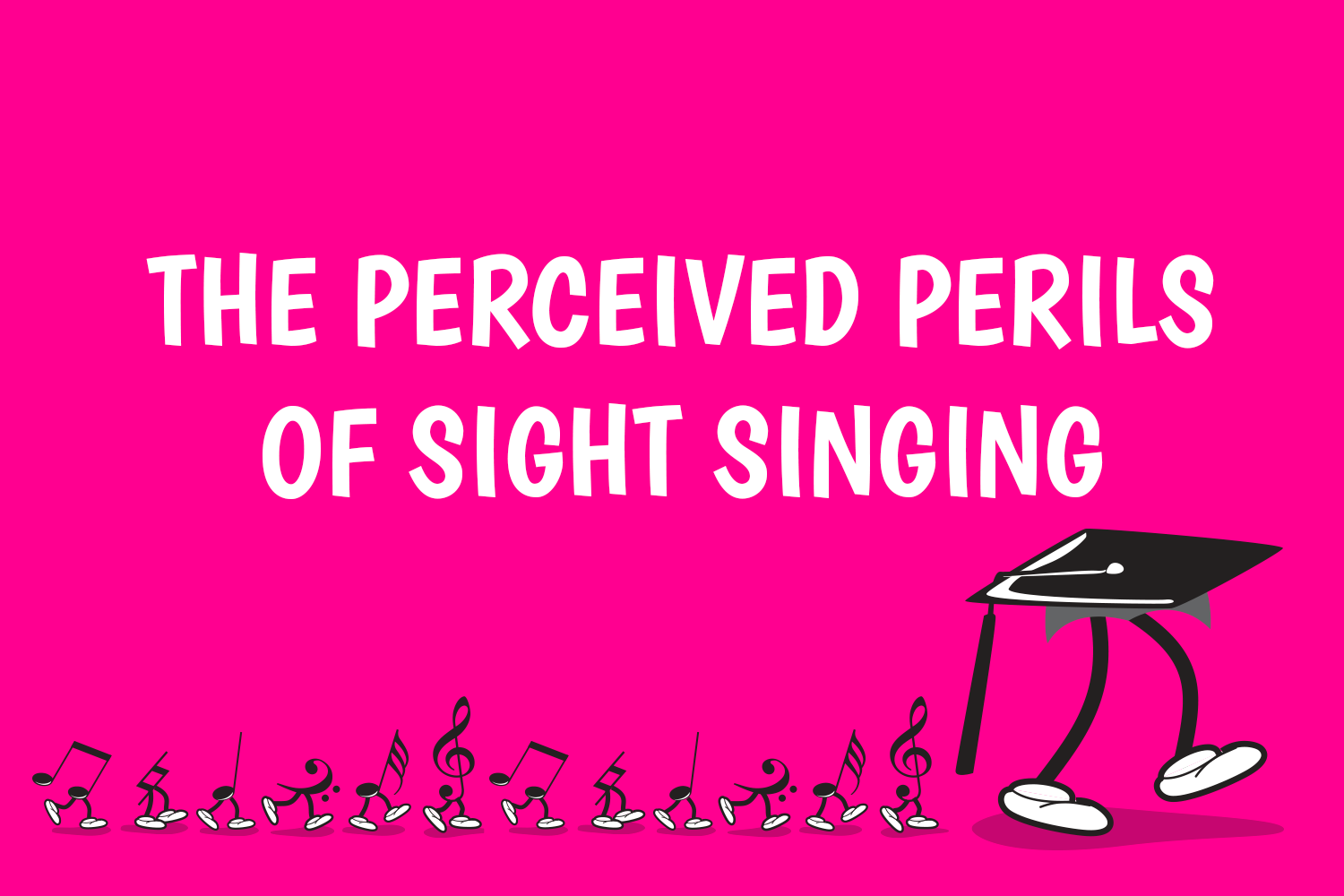The Perceived Perils of Sight Singing

This Friday afternoon my 11-year-old daughter will audition for Gondwana Voices, a national choral school run by Sydney Children’s Choir.
To help her prepare, I downloaded some of the practice materials from the Gondwana website. I was particularly interested to find out the level of sight singing required, and was amazed to find that even the easiest tests are actually quite involved! How are these children going to cope? Most of my piano students – and I dare say even a few of my colleagues – would struggle. Yet there are apparently a record number of applicants for Gondwana this year, from children aged 10 – 16 years.
In my experience with students, parents, friends and colleagues, sight singing would have to be the most feared activity of all time. No-one volunteers to do it, very few are comfortable, and hardly any actually do a good job. Why is this? Why should sight singing be any harder than sight reading?
In a recent workshop I did for the Victorian Music Teachers’ Association on aural training, I decided run an activity on sight singing. I started by asking the teachers to rate their sight singing skills on a scale of 5 down to 1. There weren’t many who rated themselves a 5 – being extremely capable. 4 – a few more hands. 3 – even more hands. 2 – the majority of hands! And finally a rating of 1, being ‘I cannot sight sing for the life of me’ – about 4 hands went up.
At this point I flipped the exercise on its head by asking those 4 people to come out the front! They were not happy, to say the least (the rest of the audience was positively gleeful). I then proceeded to get them to sight sing extremely easy examples, such as the following:
![]()
![]()
The teachers coped with these examples with no problem at all (and let me just say that the Gondwana examples are a LOT harder than these!). In fact although they had rated their sight singing skills as a 1, they were relieved to see the ease of examples. You could almost hear the voices in their heads: “Oh, I didn’t think you were talking about something THAT easy!”
I had of course previously tried out examples such as these with many ‘guinea pigs’ amongst my family and friends, both musicians and non-musicians, to prove that sight singing is not only achievable but somewhat instinctive. For example, in ex. 2 above, no matter who I asked to have a go singing it, there was not a single person whose voice went up instead of down. They were following the shape of the music.
Competent sight singing certainly requires a sense of pitch and pitch memory, but it is an issue of confidence more than anything else. If we start early with extremely simple examples, we gain confidence and think nothing of gradually trying harder and harder examples.
I imagine that most of the 10 – 16 year old potential Gondwana choristers are brimming with eagerness and confidence, which is the perfect tool for good sight singing, and is obviously why the Sydney Children’s Choir is such a shining beacon of musicality! My daughter and I now eagerly await Friday. And… we’ll practice a bit in the meantime. 🙂
